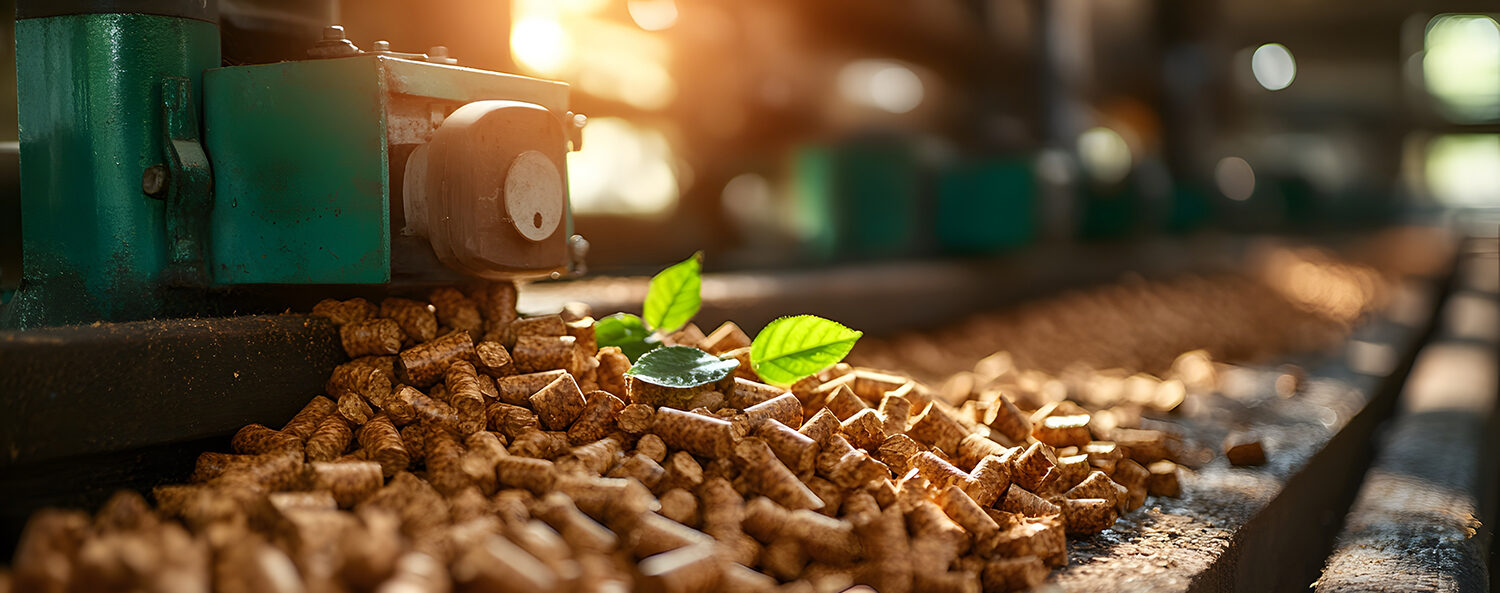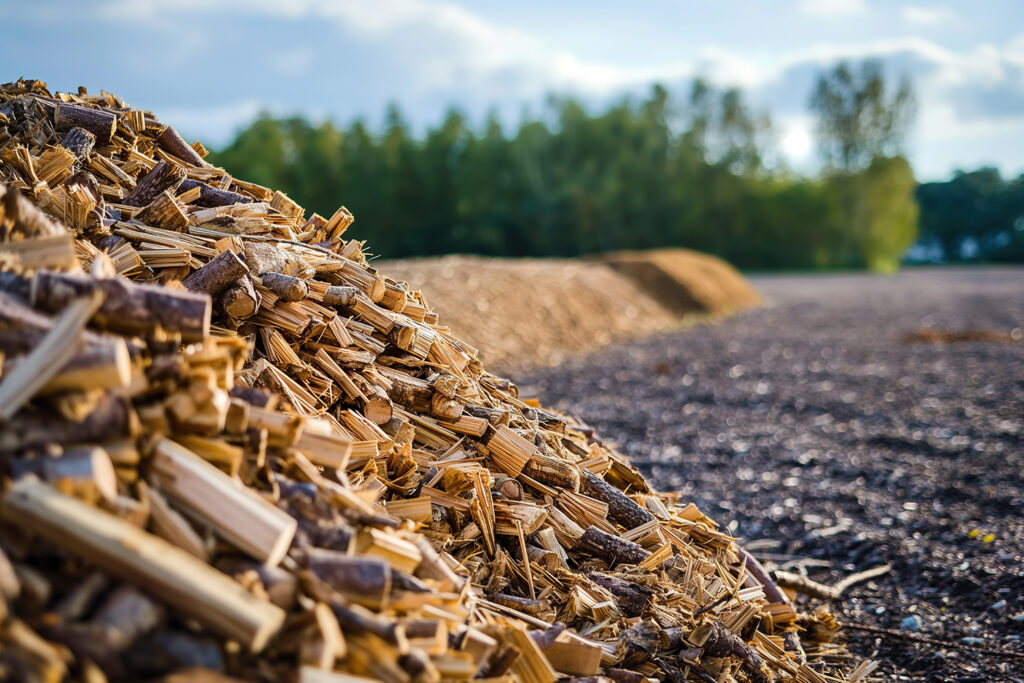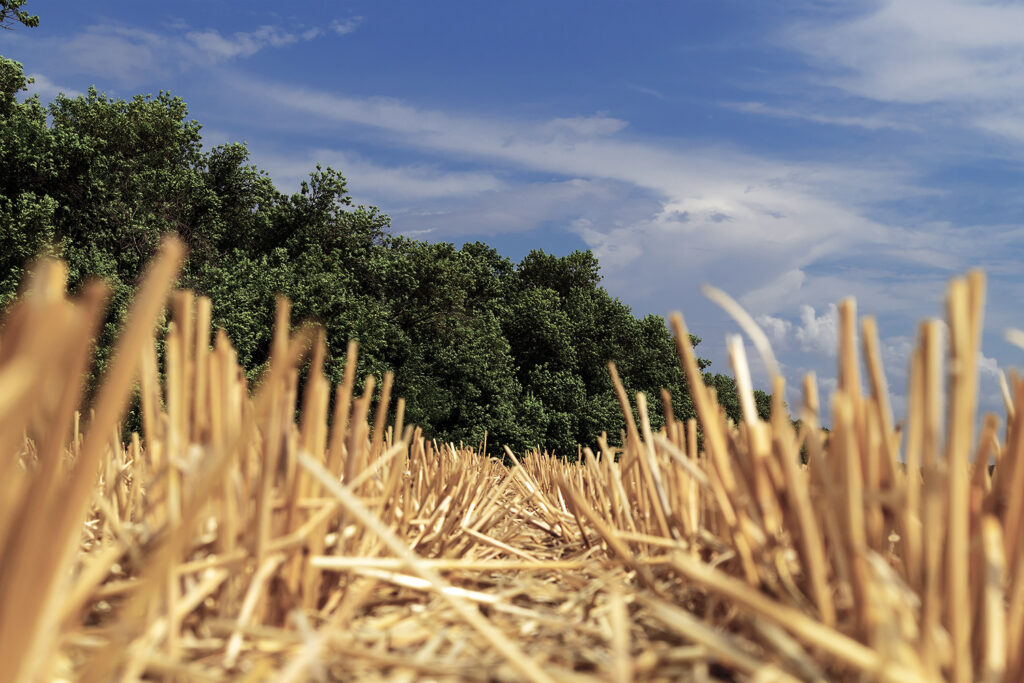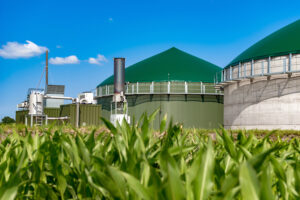Exploring the role of biomass in modern energy solutions

Introduction to biomass heating systems
Biomass heating systems can be essential in energy solutions, particularly within district heating networks with other renewable energy sources at peak load. Biomass helps create energy security.
Biomass heating systems harness various organic materials, including wood, agricultural residues, and biogas, to produce heat for diverse applications. Learn about the different types of biomass fuels and their role in district heating, considering factors such as source, quality, and conversion processes.
Depending on the source, quality, and conversion process, different types of biomass can be used for heating.
Types of biomass fuels:
Wood – the most widely used biomass for heating
Wood is the most widely used biomass for heating, as it is renewable and easy to burn. Wood can be used in various forms, including logs, chips, pellets, and briquettes. Wood is considered carbon-neutral if it comes from sustainably managed forests or waste sources that have been properly managed.
Agricultural residues – by-products of crop production like straw, stalks, and husks
Agricultural residues are the by-products of crop production, such as straw, stalks, husks, shells, or cobs. They can be used as a low-cost and abundant source of biomass for heating, and they can generate heat and electricity through CHP systems or gasification. Agricultural residues are considered carbon-neutral if used instead of being left to decompose or burned in open fields.
Biogas – produced by anaerobic digestion of organic matter
Biogas is a mixture of gases, mainly methane and carbon dioxide, produced by the anaerobic digestion of organic matter, such as animal manure, sewage sludge, food waste, or crop residues. Biogas can be used as a renewable and clean source of biomass for heating, as it has a high calorific value and low emissions.
Biogas can also generate heat and electricity through CHP systems or fuel cells. Biogas can also be upgraded to biomethane by removing carbon dioxide and other impurities and then injected into the natural gas grid or used as a vehicle fuel. Biogas is considered carbon-neutral if it avoids methane emissions from organic waste disposal or fossil fuel displacement. However, biogas production and use can also have environmental impacts, such as odour emissions, nutrient leaching, and land-use change.
These are some of the main types of biomass for heating that are currently used or have the potential for future development. Biomass for heating can offer many benefits for energy security, climate change mitigation, and rural development.
The role of biomass in district heating systems
Biomass still plays a vital role in district heating systems by serving as a supplementary fuel source for heat production. Biomass boilers and combined heat and power (CHP) plants generate heat and electricity to meet communities’ heating needs by harnessing the energy stored in organic matter.
Benefits of biomass in district heating
1. Renewable energy source
Biomass boilers utilize organic materials such as wood pellets, chips, or logs, which are renewable resources. Unlike fossil fuels, biomass can be sustainably sourced, offering a greener alternative to other heat sources, such as coal or gas, for heating needs.
2. Reducing carbon emissions
 Biomass combustion releases carbon dioxide (CO2) emissions, but these are offset by the carbon dioxide absorbed during the growth of biomass feedstock, making it carbon-neutral. By burning biomass, district heating systems significantly reduce carbon emissions compared to traditional fossil fuel combustion. This contributes to mitigating climate change and improving air quality in local communities, where the heat sources would otherwise consist of fossil fuels.
Biomass combustion releases carbon dioxide (CO2) emissions, but these are offset by the carbon dioxide absorbed during the growth of biomass feedstock, making it carbon-neutral. By burning biomass, district heating systems significantly reduce carbon emissions compared to traditional fossil fuel combustion. This contributes to mitigating climate change and improving air quality in local communities, where the heat sources would otherwise consist of fossil fuels.
3. Local resource utilization
Biomass can be sourced locally, promoting regional economic development and reducing dependence on imported fossil fuels.
4. Cost-effectiveness
Biomass fuel is more cost-effective than fossil fuels, especially in regions with abundant biomass resources. This can lower heating costs for consumers and businesses connected to biomass district heating networks.
5. Energy security with energy source diversity
Biomass diversifies fuel sources, enhancing energy security and resilience against supply disruptions. Biomass resources are often locally available, reducing reliance on imported fuels and enhancing community energy security.
6. Economic development
Investing in biomass boiler district heating infrastructure creates opportunities for local economic development. From biomass fuel production to system installation and maintenance, these projects stimulate job creation and support rural economies.
7. Utilization of waste biomass and waste reduction
 Biomass district heating systems can utilize waste biomass materials such as forestry residues, agricultural by-products, or food waste. By converting these materials into energy, biomass helps reduce waste disposal costs and environmental impact, promoting a circular economy.
Biomass district heating systems can utilize waste biomass materials such as forestry residues, agricultural by-products, or food waste. By converting these materials into energy, biomass helps reduce waste disposal costs and environmental impact, promoting a circular economy.
8. Flexibility and scalability
Biomass district heating systems can be tailored to meet the specific needs of different urban or rural communities. They offer flexibility in system design and scalability to accommodate varying heat demand levels over time.
9. Improved air quality
Compared to traditional wood-burning stoves or open fires, modern biomass boilers are designed for efficient combustion, minimizing particulate matter and harmful emissions. This contributes to better air quality and public health benefits.
Challenges and solutions
While biomass presents numerous benefits, its integration into district heating systems is not without challenges. From logistical constraints to regulatory hurdles, stakeholders must address various issues to ensure the efficient and sustainable deployment of biomass.
List of challenges:
- Feedstock supply: Ensuring a consistent, sustainable biomass feedstock supply can be challenging.
- Emissions: Despite being renewable, biomass combustion can produce pollutants. Advanced emission control technologies are essential.
- Regulatory compliance: Navigating the regulatory landscape requires expertise and can entail significant compliance costs.
Promising case studies
There are real-world examples of biomass utilization in district heating systems. From large-scale biomass CHP plants to innovative community-based initiatives, discover how biomass transforms the heat production landscape and drives sustainable development.
The Aarhus Case
 A political agreement in 2012 resulted in massive carbon reductions as the large coal-based CHPs were refitted to use wood pellets. These large units are gradually being phased out and replaced by combinations of smaller units, just as will be the case in Aarhus, where several decentralized geothermal and heat pump units will contribute to the heat supply.
A political agreement in 2012 resulted in massive carbon reductions as the large coal-based CHPs were refitted to use wood pellets. These large units are gradually being phased out and replaced by combinations of smaller units, just as will be the case in Aarhus, where several decentralized geothermal and heat pump units will contribute to the heat supply.
Many district heating systems use locally supplied straw and wood chips. These choices are based on assessments of potential heat sources, such as leftover materials from local agriculture or production forests. The decisions are based on getting the lowest heating price, but additional benefits such as local businesses and jobs are also appreciated in the communities.
Does biomass have a place in new district heating systems?
Investigating if certified and local biomass can be part of a sustainable production mix is a good idea. For district heating companies, it could support the economy, sustainability, and robustness. For society, it could support the development of rural areas, villages, and towns.
The use of biomass for heating is a topic that is continuously being debated, and there are many nuances to consider, such as the length of carbon cycles for different types of biomass materials and what to do with waste products like coffee shells, cherry pits, and olive stones.
What does it take to succeed?
Biomass heating systems represent a viable and sustainable energy solution with the potential to significantly contribute to energy policy goals, climate change mitigation, and economic development. For stakeholders in finance, law, and politics, understanding the intricate balance of economic viability, regulatory compliance, and policy support is crucial to leveraging the benefits of biomass heating while addressing its challenges. As such, a coordinated approach that integrates technological advancements, robust regulatory frameworks, and strategic policy incentives is essential for successfully deploying and operating biomass heating systems.
Conclusion: Embracing biomass for a greener future
As the transition to renewable energy accelerates, biomass stands out as a versatile and environmentally friendly option for district heating when combined with other renewable heat sources. By leveraging biomass resources wisely and investing in technological advancements, communities can harness the power of biomass to achieve their climate goals while ensuring a reliable and affordable heat supply for generations to come.
Read some of the outstanding articles below to learn more about biomass in district heating.
Learn more from selected Hot|Cool articles
Did You Find What You Were Looking For?
Learn more about other heat sources for district heating here.
